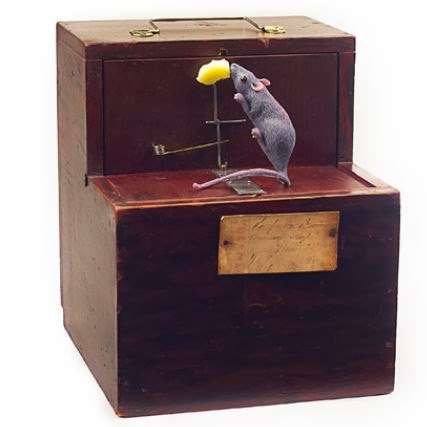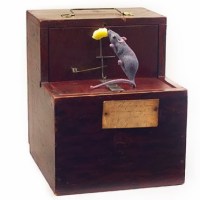
Sometimes I read a news item so great I have to track down the person at the heart of the story, and beg for more details. Here’s an example: an article on Magnapubs entitled Museum Exhibits and Macroeconomics? In it, professor Satarupa Das of Montgomery College wrote about her use of an exhibit at the National Museum of Natural History in an introductory economics course. And it wasn’t just an ancillary field trip–the museum component counted for 25% of the course grade! Graduate students in fields like paleontology or art history regularly use museum collections to support their work. But economics? I was particularly intrigued as this example seems to support the approach of proponents of STEAM education, who contend that cross-disciplinary exploration can support almost any academic pursuit. So I wrote to Dr. Das to invite her to say more.
Can college professors of economics use museums in their classrooms? Is there a pedagogical connection between museums and classrooms? My answer is an emphatic “yes!” to both questions.
Educators are interested in finding active or experiential learning methods to engage students in classroom. Active or experiential learning can involve a wide range of activities. It can be as simple as having classroom discussions with students participating or, it can be as complex as students doing computer run experiments with investment funds or doing service in the community. In very simple terms, experiential learning involves performing an activity, critically reflecting on it and then drawing some analyses from it. Visiting museums can be a form of experiential learning as well. I learned it for the first time in 2011 when I won a Smithsonian Faculty Fellowship resulting from a partnership of the Paul Peck Institute at Montgomery College and the Smithsonian Institution in Washington, D. C.
 |
| Patent Model of a Mousetrap Smithsonian American Art Museum Gift of Alan and Ann Rothschild |
My first encounter with experiential learning at the museum happened in the Smithsonian Museum of Natural History. Since the theme of the fellowship was “The Politics of Identity: Race in 21st Century America” and fellows were responsible for finding an exhibit that could be linked to one of their courses, I decided to integrate Macroeconomics with the exhibit titled “RACE – Are We So Different?” at the Smithsonian Museum of Natural History. )A concise version of my experience of using Race exhibit is published in The Teaching Professor (October, 2012). The project inspired me so much, that even after the end of the fellowship, I continued to use a Smithsonian exhibit with my classes. After the completion of the fellowship, I used “Inventing a Better Mousetrap: Patent Models from the Rothschild Collection” at the Smithsonian American Art Museum with my Microeconomics class for four semesters.
As an instructor I have derived substantial benefits from these implementations. The museum integration projects allowed me to move away from the lecture mode of teaching and encouraged me to design new types of assignments. These assignments required students to display command of existing knowledge, evaluate and synthesize existing knowledge, do group work and presentations. Secondly, this new pedagogy invigorated me. I am always searching for ways to keep my teaching fresh. I always try to convey to my students that economics is not just a list of concepts. The museum exhibits gave me a tool that allowed me to provide students with contexts to understand economic concepts and make them interesting. The opportunity to use this tool re-energized me.
The projects benefited students as well. First, the students appreciated the social learning experience outside the classroom and the change of pace that museum projects provided. Students interacted socially amongst themselves during the visits. Second, the project enhanced student engagement with the content. The way I had structured the pre-visit and post-visit readings, discussions, actual visit to the museum, assignments all allowed students to have in-depth coverage for certain topics.
Why don’t more professors then integrate classroom teaching with museum exhibits and derive these obvious gains? I think the answer in economics profession is that many economists are not aware of such integration. Traditional teachers rely on the lecture mode of teaching and their toolkit of active learning strategies does not include well-structured museum visits. Only a recent paper by Watts and Christopher (2012) shows some serious attempt to bring museum artwork into economics teaching at the undergraduate level. The paper lists a series of fifty paintings and provides a set of economic concepts/issues associated with each painting.
However, more can be done. The Patent Models Exhibit is a wonderful example where history of patents, technological innovation and some discussion on economic growth can be tied in with the visit to this exhibit. I had also used the online exhibit of the depression era art “1934: New Deal for Artists” to stimulate classroom discussion. This exhibit included paintings by artists who were employed under Public Works of Art Project—the first federal government program to support art. Looking at these paintings invoked discussion on unemployment (cyclical and structural) and the Great Depression. With appropriate readings and assignments, this exhibit can be a full-fledged tool in an economics classroom.
However, the Smithsonian Institution is not the only institute that can be integrated with classrooms. Instructors can use any local resource for experiential learning: state or local museums (mining museums, whaling museums, presidential libraries, etc.), historical sites or living history museums (Ellis Island Museum, Plymouth Plantation, Colonial Williamsburg, Grand Portage, etc.). Any lighthouse museum is especially fascinating to me. I can think of ways to integrate a visit to a lighthouse museum with discussion of private and public goods. The point is there are many ways to integrate museum exhibits with classroom teaching. More work such as mine will expose others in the profession to explore and use this novel method of teaching economics.
Another reason economists have not used museums with their classrooms could be because this process of integrating museums with exhibits requires substantial time commitment from professors and many professors who are already overworked cannot pick up additional time-consuming assignments. For this reason, academic institutions and departments need to find incentive mechanisms (e.g., giving release time from another course, a reward or recognition for doing innovative work) to encourage professors to take up this approach to teaching.
Museums also need to do outreach work in their community. Museum researchers have long found a satisfying cognitive component to museum visits (Doering, 1999) but they need to take proactive steps so that academic institutions and educators can both be aware of such cognitive benefit and build strong partnerships for mutual gain.








